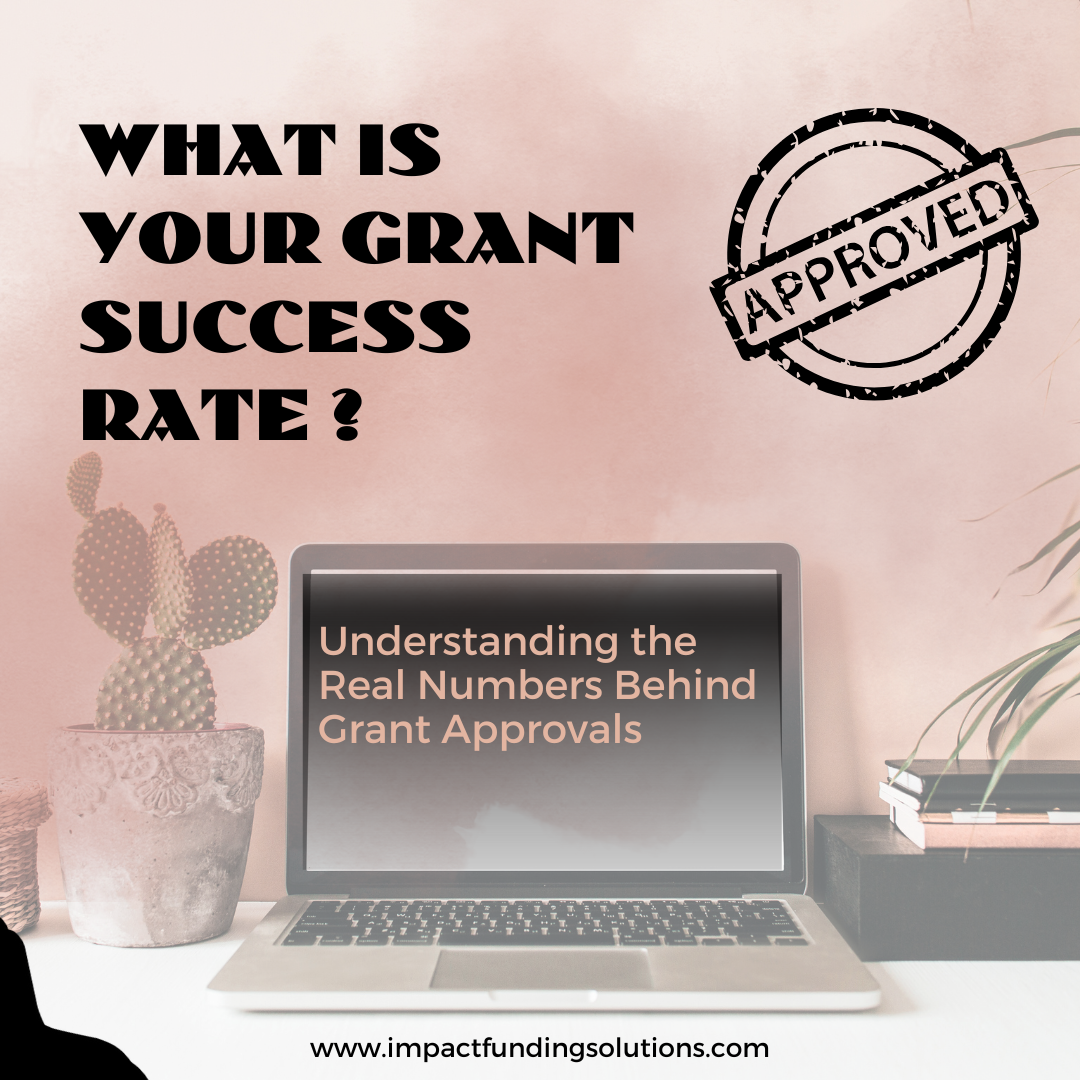What Is Your Grant Success Rate?

What Is Your Grant Success Rate?
Understanding the Real Numbers Behind Grant Approvals
As a grant writer, one of the most common questions I get asked during discovery calls is, “What is your success rate?” Honestly, I believe this is an unfair and often irrelevant question. When a nonprofit receives a grant, the credit should largely go to the incredible work their team is doing on the ground—and how effectively they are tracking, measuring, and communicating that impact.
My role is to craft compelling, strategic responses to each grant question—drawing from the very heart of the nonprofit’s mission and storytelling in a way that aligns with the funder’s priorities. But it’s important to remember that grant approvals are influenced by numerous factors outside of a grant writer’s control, such as funder preferences, shifting priorities, and competition levels. That’s why it’s neither accurate to blame a grant writer for a rejection nor solely credit them for an approval.
That said, the average grant approval rate in the U.S. hovers around 20%. There are, however, ways to stay on track with—or even exceed—that average. One of the most effective strategies we use at Impact Funding Solutions is building an annual grant plan designed to maximize approvals by submitting 5 highly relevant, well-researched applications per month—totalling 60 or more over the course of a year. If each application averages a $10,000 request, that could potentially bring $120,000 or more in grant funding annually into a nonprofit’s budget. In addition we consult with the nonprofit to be as grant ready as possible and to be continually working on improving the areas we know grant funders are looking for.
My goal as a grant writer is not just to write strong applications, but to help guide the organization toward habits and systems that strengthen their overall grant readiness. Because when my clients win, I win—and more importantly, the communities they serve win.💛

How to Improve Your Grant Success Rate
Organizations that consistently win grants often share a few key traits. Here are some of the most effective ways to improve your outcomes:
- Maintain a fresh, updated website
- Keep social media active and engaging
- Prepare clear and accurate financial statements (audited are best)
- Publish an annual report that demonstrates impact
- Plan ahead with a strategic grant calendar and budget alignment

What Are the Average Grant Approval Rates?
The success rate for grant approvals can vary widely depending on the type of grant, the competitiveness of the funder, and how prepared the applicant is. Here’s a breakdown:
Private Foundation Grants:
Approval Rate: Around 10% to 30%
Foundations often receive hundreds to thousands of applications each year. Well-aligned and well-written proposals perform better.
Government Grants (Federal, State, Local):
Federal grants: Often 5% to 20% due to high competition
Local or state grants: Can range from 25% to 50% with fewer applicants
Corporate and Bank Grants:
Approval Rate: Typically 15% to 30%
Applications that align with a company’s mission and have a local or regional focus tend to be more successful.
Important Note:
Nonprofits with a solid grant strategy, clear outcomes, compelling storytelling, and strategic alignment with funders often exceed the 25% success rate when applying consistently and methodically.

Which Types of Nonprofits See Higher Approval Rates?
While every organization is unique, certain nonprofit sectors tend to perform better in the grant space due to funder interest and measurable impact:
1. Health & Medical Services
Funders often support measurable, critical health outcomes.
Examples: Mental health services, addiction recovery, mobile clinics
2. Education & Youth Development
Programs that improve academic success and support underserved youth remain a top priority.
Examples: STEM programs, afterschool tutoring, early childhood education
3. Food Insecurity & Hunger Relief
Addressing basic needs like hunger often attracts consistent funding.
Examples: Food banks, meal programs, backpack food programs
4. Housing & Homelessness Prevention
Housing is a visible and urgent issue for many funders.
Examples: Emergency shelters, transitional housing, eviction prevention
5. Disability Services
Inclusion, accessibility, and long-term care are increasingly supported areas.
Examples: Day programs, adaptive services, neurodiversity supports
6. Environmental Conservation
Climate and sustainability issues are drawing increased philanthropic focus.
Examples: Urban agriculture, clean water initiatives, youth climate programs
7. Veteran Services
Veteran-focused programs are often funded by patriotic and health-focused funders.
Examples: PTSD recovery, job placement, transitional housing
Tips for Higher Approval Rates Regardless of Niche
- Be grant ready with strong data, clear budgets, and compelling stories
- Align closely with each funder’s mission and priorities
- Submit well-researched, customized applications
- Track and report outcomes with measurable impact
Would you like help building a grant strategy that maximizes your potential success rate? Reach out to Impact Funding Solutions to start building a long-term, sustainable grant plan tailored to your organization’s mission and funding goals. CONTACT US TODAY FOR A FREE DISCOVERY CALL

